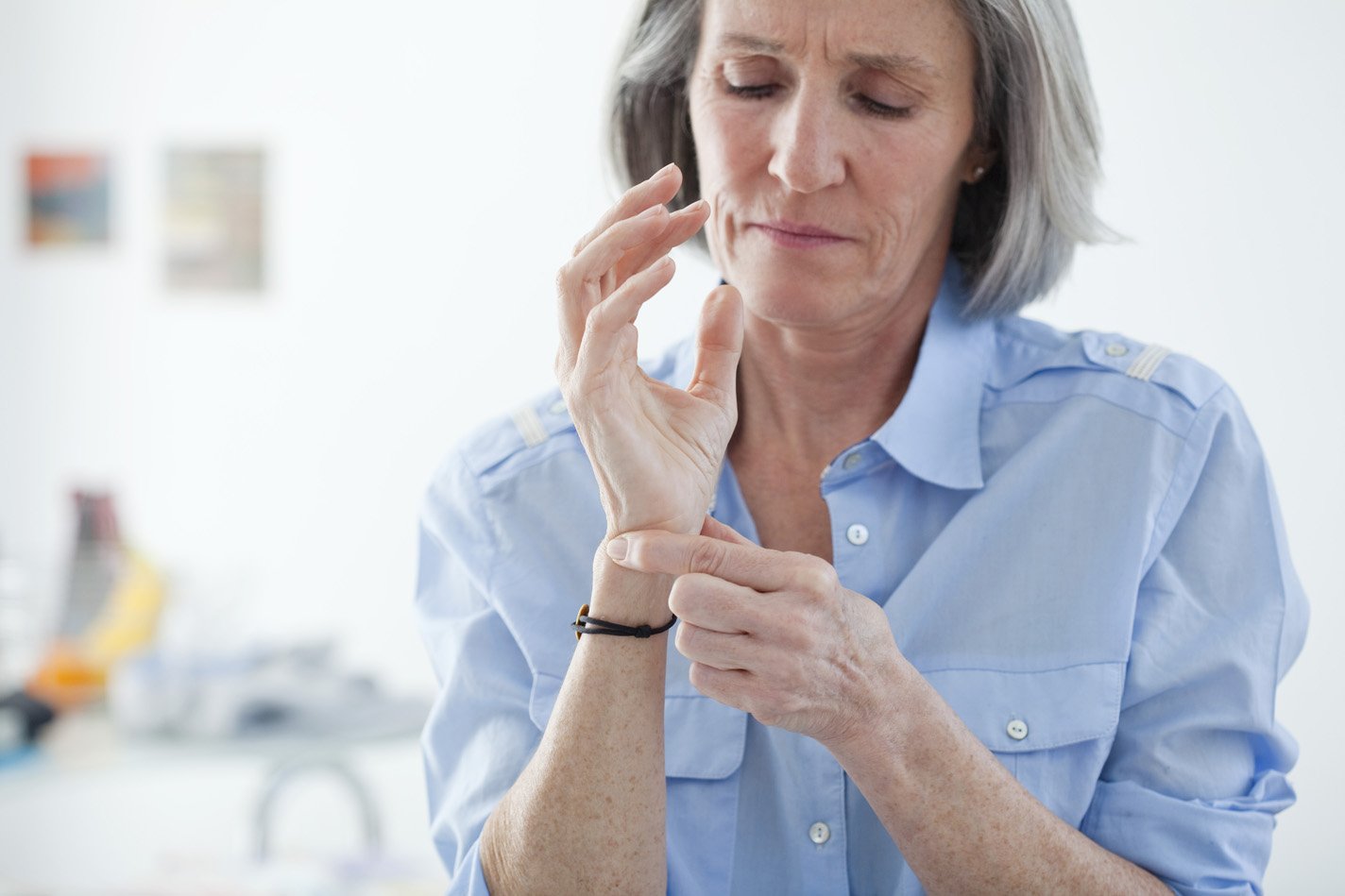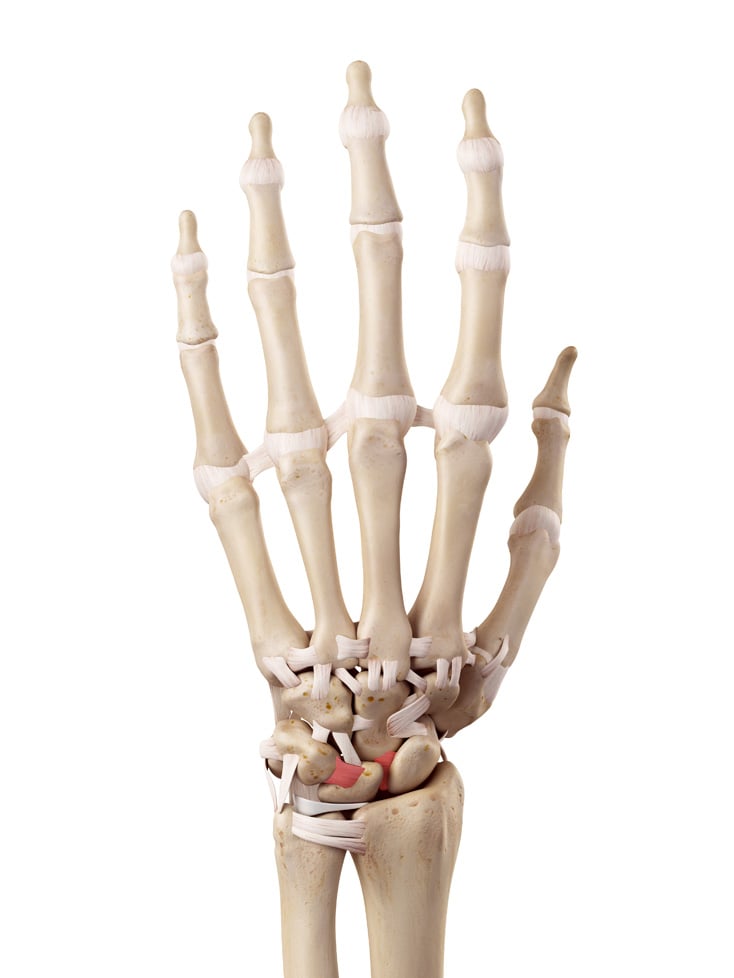What is Ulnocarpal Abutment Syndrome?
Ulnocarpal abutment syndrome is a painful wrist condition in which bones rub together abnormally in the wrist leading to arthritis. The ulna is the long forearm bone that runs from the tip of the elbow and ends at the small finger side of the wrist. The wrist end of the ulna can be too long and “abut” or rub against the other small carpal wrist bones damaging the cartilage and also tearing a ligament in the wrist called the TFCC.

Causes
Many cases of ulnocarpal abutment occur without injury and are simply a matter of unusual anatomy (the ulna grows too long). The ulna can also become relatively too long if the other forearm bone, the radius, is fractured and heals too short relative to the intact ulna.

Ligaments of the Hand and Wrist
Signs and Symptoms
- Gradual onset of aching pain over the small finger side of the wrist.
- Pain when weightbearing through the wrist (pushing up from a chair).
- Clicking or popping sensations with certain wrist motions.
Is There a Test For Ulnocarpal Abutment Syndrome?
Yes! Your symptoms and medical history as well as an examination of your hand and wrist can help to diagnose ulnocarpal abutment. Special x-rays of the wrist will often show that the ulna is too long and may show signs of arthritis in the wrist. Occasionally an MRI of the wrist is needed for diagnosis and to help guide treatment.
Treatment
We start with nonoperative treatment options, and progress to operative treatments if symptoms are persistent and severe enough to consider reconstruction.
Nonoperative:
Activity modifications (avoid aggravating activities)
NSAIDS
Wrist bracing
Steroid injection
Operative:
If the ulna is only slightly too long, sometimes it can be shortened using wrist arthroscopy techniques where a small camera and instruments are placed in the wrist joint, and the prominent end of the ulna is “shaved” down.
If the ulna is significantly too long, we often recommend a procedure called ulnar shortening osteotomy in which an incision is made along the forearm and surgical cuts are made in the bone to shorten it in the forearm. The cut ulna is then held back together with a metal plate and screws which sometimes requires a second surgery for removal after the bone has healed.
Ready to confirm a diagnosis and fix the problem or just want to learn more?
Our board-certified orthopedic hand and wrist surgeons Eric Angermeier, MD and Kyle Kokko, MD, PhD, are here to help! They can often diagnose the problem in one visit, and get you started with a treatment plan. We offer a wide variety of both nonoperative and operative treatment options.
Call today for a clinic or telehealth appointment! 854-429-4263